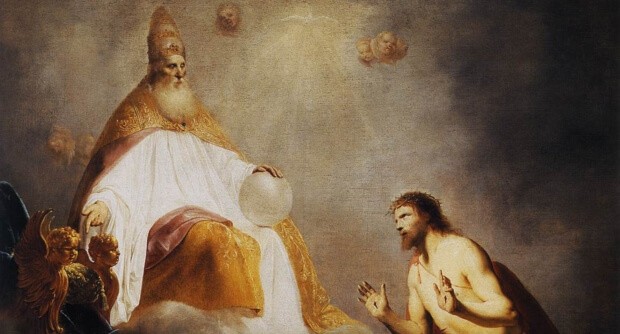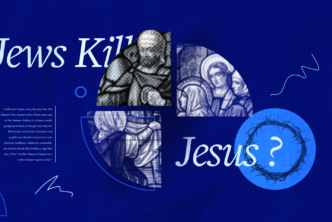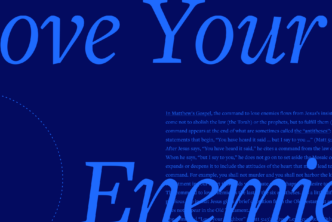The epistles of Peter and Jude are often overlooked in preaching and Bible study. Not only are they nestled among the more popular letters of Paul and the book of Revelation, but portions of these epistles sound odd to our modern sensibilities. That wasn’t the case in the first century. We can better grasp the meaning of these letters if we understand what they have in common with influential ancient Jewish and Christian writings that were circulating at the time. One of those literary works is known to us today as 1 Enoch, a book Peter and Jude draw upon in their letters.
A quick aside about Enoch: First Enoch is placed in a collection of ancient Jewish and Christian writings known as the “pseudepigrapha.” This term is often misunderstood to mean “false writings,” but it actually describes literature that bears the name of a biblical figure who did not write the book named after him. (Think of the term “pseudonym,” meaning “pen name.”)
Jews and Christians of antiquity considered books such as 1 Enoch important resources for understanding biblical books and their theology. Peter and Jude were no exception. For example, Jude 14–15 draws directly from 1 Enoch.
| 1 Enoch 1:9 | Jude 14–15 |
| Behold, he comes with the myriads of his holy ones, to execute judgment on all, and to destroy all the wicked, and to convict all flesh for all the wicked deeds that they have done, and the proud and hard words that wicked sinners spoke against him. | It was also about these that Enoch, the seventh from Adam, prophesied, saying, “Behold, the Lord comes with ten thousands of his holy ones, to execute judgment on all and to convict all the ungodly of all their deeds of ungodliness that they have committed in such an ungodly way, and of all the harsh things that ungodly sinners have spoken against him.” |
All of the ideas found in 1 Enoch 1:9 can be found in three Old Testament passages (Jer 25:30–31; Isa 66:15–16; Zech 14:5). Rather than quote all three, Jude quotes the verse in 1 Enoch that combines them. But the real point of interest isn’t Jude’s succinctness; it’s his interpretation of 1 Enoch, as well as the Old Testament. In 1 Enoch 1:9 it is the “Great Holy One” (God) who is “coming with myriads of holy ones” from Sinai (1 Enoch 1:4) and who has promised to come to earth in the day of the Lord for final judgment. For Jude (as well as Mark and Paul; compare Mark 8:38; 1 Thess 3:13), this event is transformed into the return of Jesus Christ (Jude 17–18). By naming Jesus as the one coming with the holy ones, Jude equates Jesus with the God of Israel. Jude’s citation of 1 Enoch is his efficient strategy for declaring that Jesus is God.
Peter also draws freely upon 1 Enoch; his first letter contains roughly 20 allusions to 1 Enoch 108. First Peter 1:7–18 illustrates how Peter uses 1 Enoch to teach and encourage his audience.
| 1 Enoch 108:6–10 | 1 Peter 1:6–12 |
| Here are thrown the spirits of the sinners and blasphemers and those who do evil and those who alter everything that the Lord has said by the mouth of the prophets (about) the things that will be done. For there are books and records about them in heaven above, so that the angels may read them and know what will happen to the sinners and the spirits of the humble, and those who afflicted their bodies, … those who love God, and do not love gold and silver and all the good things that are in the world; but gave their bodies to torment; … The Lord tested them much, and their spirits were found pure, so that they might bless his name. | You have been grieved by various trials, so that the tested genuineness of your faith—more precious than gold that perishes though it is tested by fire—may be found to result in praise and glory and honor at the revelation of Jesus Christ. Though you have not seen him, you love him. Though you do not now see him, you believe in him.… Concerning this salvation, the prophets who prophesied about the grace that was to be yours searched and inquired carefully … but you, in the things that have now been announced to you through those who preached the good news to you by the Holy Spirit sent from heaven, things into which angels long to look … conduct yourselves with fear throughout the time of your exile, knowing that you were ransomed from the futile ways inherited from your forefathers, not with perishable things such as silver or gold. |
These similarities show how both 1 Enoch and 1 Peter encourage the faithful to persevere. Their love for God is an earthly drama watched by angels. But like Jude, Peter turns the object of this love in 1 Enoch—the God of Israel—to Jesus. Peter is encouraging those of Jewish heritage to continue following Christ.
These parallels show us that both Peter and Jude want to strengthen the resolve of their readers to follow Jesus, the God of Israel revealed for them. By reading texts such as 1 Enoch, we can better understand the cultural background of the Bible. We can also see how the biblical writers engaged texts that shape their theology.
***

This article is excerpted from Dr. Heiser’s book I Dare You Not to Bore Me with the Bible.
Discover more fascinating aspects of the Bible with Dr. Heiser
Keep exploring the strange, perplexing, and mysterious aspects of the Bible with these excerpts from Dr. Michael S. Heiser’s The Unseen Realm: Recovering the Supernatural Worldview of the Bible. Or dive deeper into the supernatural world of the Bible and pick up a copy of The Unseen Realm today.





